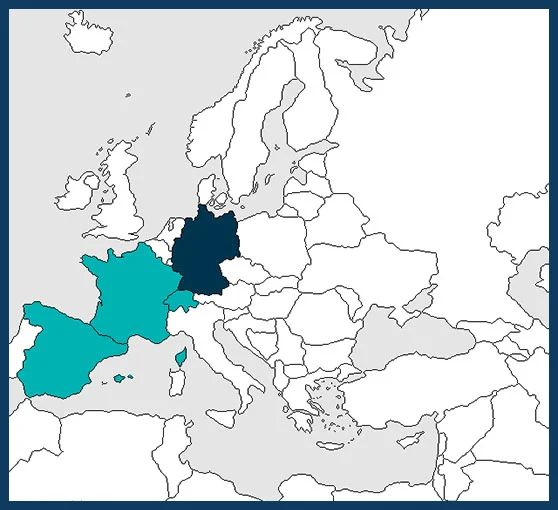05-2015 to 04-2018
€ 978 015
Jasmin Joshi
jjoshi@uni-potsdam.de
University of Potsdam, GERMANY (Coordinator)
French National Institute for Agricultural Research (INRA), Clermont Ferrand, FRANCE
Freie Universität Berlin, GERMANY Georg-August-University Göttingen, GERMANY
Leibniz Center for Agricultural Landscape Research (ZALF), GERMANY
Estacion Experimental de Aula Dei, Spanish National Research Council (CSIC), Zaragoza, SPAIN
Universitat de Lleida, SPAIN
WSL Swiss Federal Research Institute, Birmensdorf, SWITZERLAND

Global change may endanger agricultural landscape functioning in the future. Biodiversity has the potential to buffer agro-ecosystems against change and stabilize ecosystem functions and services. However, the suitable level of biodiversity to maximize ecosystem services in agricultural landscapes is not yet known and quantified.
BASIL aims at understanding the importance of diversity from the field to the agricultural landscape scale, evaluating the mosaic of extensively and intensively managed sites and natural habitats for ecosystem services (ESS) and a sustainable agriculture.
BASIL will cover the following specific objectives:
•To understand differences between extensively and intensively managed
agricultural landscapes in terms of biodiversity and provisioning, regulating and supporting ESS (e.g. water quality, soil conservation, preservation of soil structure and biodiversity, C and N storage, weed and pest control);
• To determine the contribution of plant and microbial diversity to the closure of nutrient cycles, the synchronization of plant nitrogen (N) requirement and N delivery by soil, and the coupling of carbon (C) and N cycles;
• To determine the necessary level of integration of biodiversity that is required to improve the economic and environmental sustainability of agriculture by performing landscape trait-based analyses;
• To identify particular landscape structures and cropping systems promoting biodiversity and its contribution to targeted ESS;
• To assess the importance of different policies and governance systems having an impact on environmental and economic sustainability via agricultural landscape management.
To achieve its objectives, BASIL will:
• Assess the N availability and N cycling, i.e. the temporal and spatial distribution
of N accross studied landscapes (i.e. France, Germany, Spain and Switzerland) including bordering zones of intensively managed agricultural fields and natural ecosystems;
•Assess management impact on soil microbial communities and their regulation of C and N cycles;
• Test whether forests, semi-natural areas or natural patches in agricultural fields (e.g. in-field ponds) are stepping stones for belowground microbial re-colonisation of intensively used areas after disturbance;
• Investigate whether subsoils of agricultural fields are reservoirs for mycorrhizal fungi that may re-colonise topsoils of intensively used areas after disturbance;
• Conduct surveys, stakeholder workshops and expert interviews, and use the research results to perform a socio-economic analysis to understand the impact of regional/national agricultural and conservationist policies on management practices.
The BASIL project is being developed in contact with networks of farmers who promote the use of different plant species and reduced soil tillage in order to 1) benefit from their field observations and 2) transfer to them the scientific knowledge. BASIL will set up contacts with national, international and global environmental agencies that have an overlapping interest in the goals of the project. BASIL will also engage with policy makers and administration to conduct interviews, keep them informed about the project’s schedule and results and develop a policy brief. BASIL plans to organize visits for the general public to the different study sites and, thus, give visibility to the project and its goals to a broader audience.